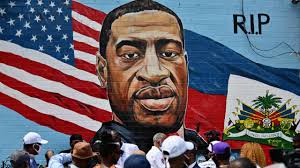Attacks

Hate crimes have increased by a staggering 20% during the Trump administration. The FBI's annual reports on hate crime statistics show that such crimes increased from 6,121 in 2016 to 7,314 in 2019, the highest number recorded by the FBI in nearly a decade. Of those, 7,103 incidents involved one-time beatings in which 8,552 people were hurt; 211 incidents involved various types of hate crimes in which 260 people were hurt. Of those 8,552 crimes: 64.4% were crimes against persons; 32.8% against property; 2.8% against society; 9.6% in schools and colleges; and 4.4% in churches, synagogues, temples and mosques.
According to recent data from the National Consortium for the Study of Terrorism and Responses to Terrorism (START) at the University of Maryland, hate crime perpetrators vary in motives, backgrounds, demographics, criminal history and goals. Of the 6,406 known perpetrators of these hate crimes, 52.5 percent were white, 23.9 percent were black or African American, and 14.6 percent were of unknown race. 57.6% of hate crimes committed in 2019 were motivated by race, ethnicity, or ancestry; 20.1% by religion; 16.7% by sexual orientation; 2.7% by gender identity; 2% by disability; and 0.9% by gender. All of these percentages are within 2 percentage points of previous totals reported by the FBI over the past four years. Most hate crimes occurred in California, New York, Washington, D.C., New Jersey and Texas.
In 2019, blacks, Jews, gays, and Hispanics had the largest increases in hate crimes. In October 2021, the FBI released its final statistics for 2020. Detailed incident reports were provided for 8,263 criminal incidents and 11,129 related offenses motivated by bias based on race, ethnicity, ancestry, religion, sexual orientation, disability, gender and gender identity.
The FBI reported 8,052 single bias incidents involving 11,126 victims. The percentage distribution of victims by type of bias shows that 61.8% of victims were targeted because of offender bias by race/ethnicity/origin, 20.0% were targeted because of offender bias by sexual orientation, and 13.3% were targeted because of offender religious bias, 2.7% were victimized because of offenders' gender identity bias, 1.4% were victimized because of offenders' disability bias, and 0.7% were victimized because of offenders' gender bias. There were also 211 multiple bias hate crimes with 346 victims.
Of the 7,750 hate crimes classified as personal crimes in 2020, 53.1% involved intimidation, 27.9% involved simple assault, and 17.9% involved aggravated assault. Twenty-two (22) murders and 21 rapes were reported as hate crimes. The remaining 32 hate crimes were reported in the "other" category. As indicated in the vandalism section, of the 3,147 hate crimes classified as property crimes, the majority (74.1%) were acts of destruction/vandalism/vandalism. Robbery, burglary, theft, motor vehicle theft, arson and other offenses accounted for the remaining 25.9% of property crimes. Two hundred and thirty-two (232) additional offenses were classified as crimes against society. This category of crime represents society's prohibition against engaging in certain activities such as gambling, prostitution, and drugs. Generally, these are victimless crimes whose target is not property.


